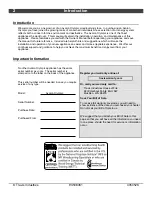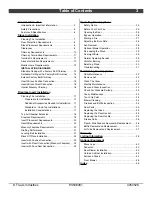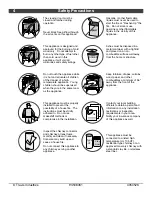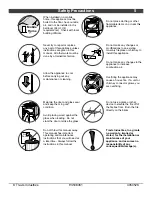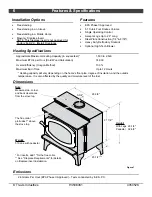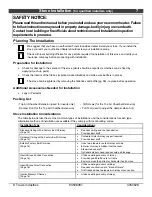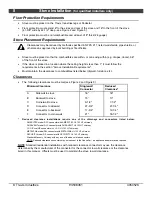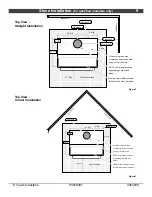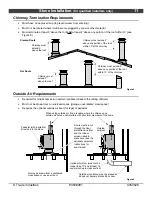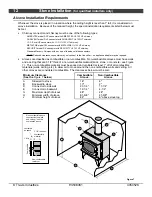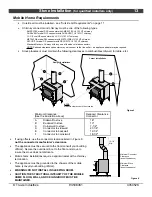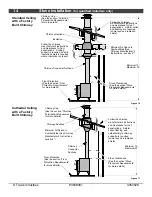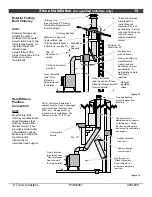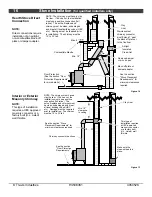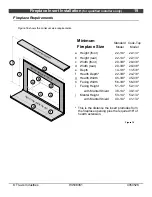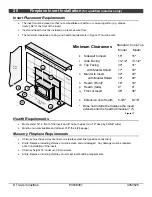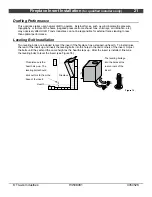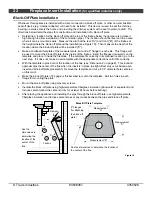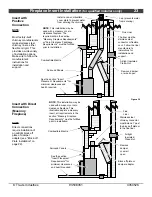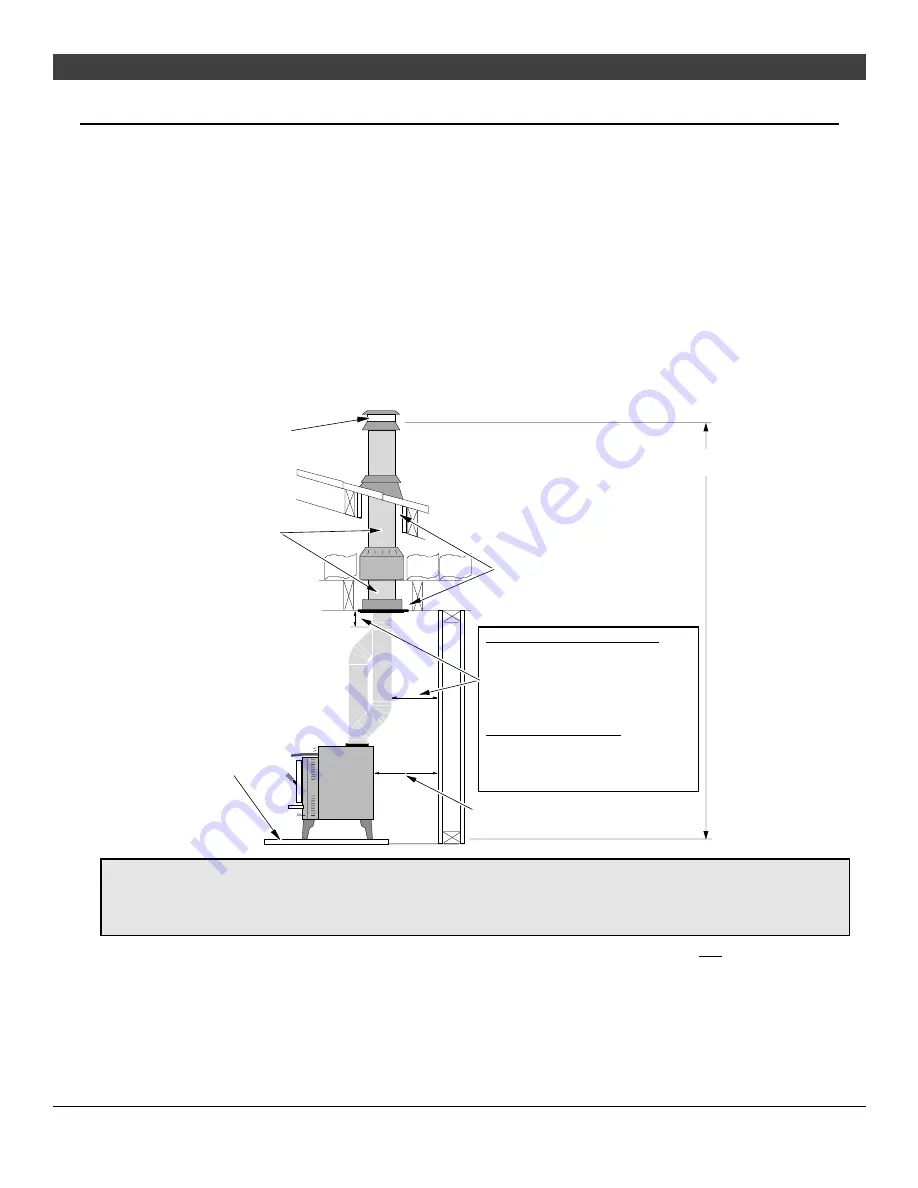
10
Stove Installation
(for qualified installers only)
© Travis Industries
93508061
4050526
Chimney Requirements
•
DO NOT CONNECT THIS UNIT TO A CHIMNEY FLUE SERVING ANOTHER APPLIANCE.
•
Chimney connector must be a minimum 24 MSG black or 26 MSG blued steel (6" diameter). Chimney
must be used from the first floor or wall penetration to the chimney cap.
•
Use 6" diameter type UL 103 HT chimney from one manufacturer (do not mix brands) or code
approved masonry chimney with a flue liner.
•
Chimney connector and chimney must be fastened to the stove and each adjoining section.
•
Follow the chimney manufacturer's clearances and requirements.
•
Use the chimney manufacturer's fire stops, attic guards, roof supports, and flashings when passing
through a ceiling or thimble when passing through a combustible wall.
•
No more than 180
o
of elbows (two 90
o
elbows, or two 45
o
& one 90
o
elbow, etc.).
•
NOTE: Additional elbows may be allowed if draft is sufficient. Whenever elbows are used the draft is
adversely affected. Additional chimney height may be required to boost draft.
AA
AA
AA
A
A
A
A
A
AA
AA
AA
AA
AA
AA
AA
AA
AA
Chimney Cap
(See the section
"Chimney Termination
Requirements" for
more details)
A
A
AA
AA
AA
AA
AA
AA
AA
Factory Built
Chimney
Sections
Minimum Air Space to
Combustibles (See
Chimney Manufacturer's
Instructions - usually 2")
Ceiling Penetration
Equipment (Attic
Radiation Shield with
Chimney Support)
Reduced
Clearance
Chimney
Connector
Sections
Roof Penetration Equipment
(Roof Radiation Shield,
Flashing, Storm Collar)
}
}
AAAAA
Floor
Protection
AA
AA
AA
AA
Stove Clearance
(as outlined in this manual)
A
A
A
A
A
A
A
A
A
AA
AA
AA
AA
AA
AA
}
Standard residential installations with
reduced clearance connector may use the
clearance determined by the manufacturer
of the connector for the connector to wall
clearance or the clearance listed in this
manual.
Mobile home installations must use the
the reduced clearance connector
clearances listed in this manual under
“Additional Requirements for Mobile Home
Installations”.
Minimum System 15'
Maximum System 33'
Figure 4
Drafting
Performance
This appliance relies upon natural draft to operate. External forces, such as wind,
barometric pressure, topography, or factors of the home (negative pressure from exhaust
fans, chimneys, air infiltration, etc.), may adversely affect draft. Travis Industries can not be
responsible for external forces leading to less than optimal performance.
•
Standard residential installations may use single-wall connector (Mobile-Homes may
not
)
•
Standard residential installations with reduced clearance connector may use the clearance
determined by the manufacturer of the connector for the connector to wall clearance or the clearance
listed in this manual. Offsets must be used to maintain the stove to wall clearance. Mobile homes
must use the clearances listed in this manual under "Additional Requirements for Mobile Home
Installations".


